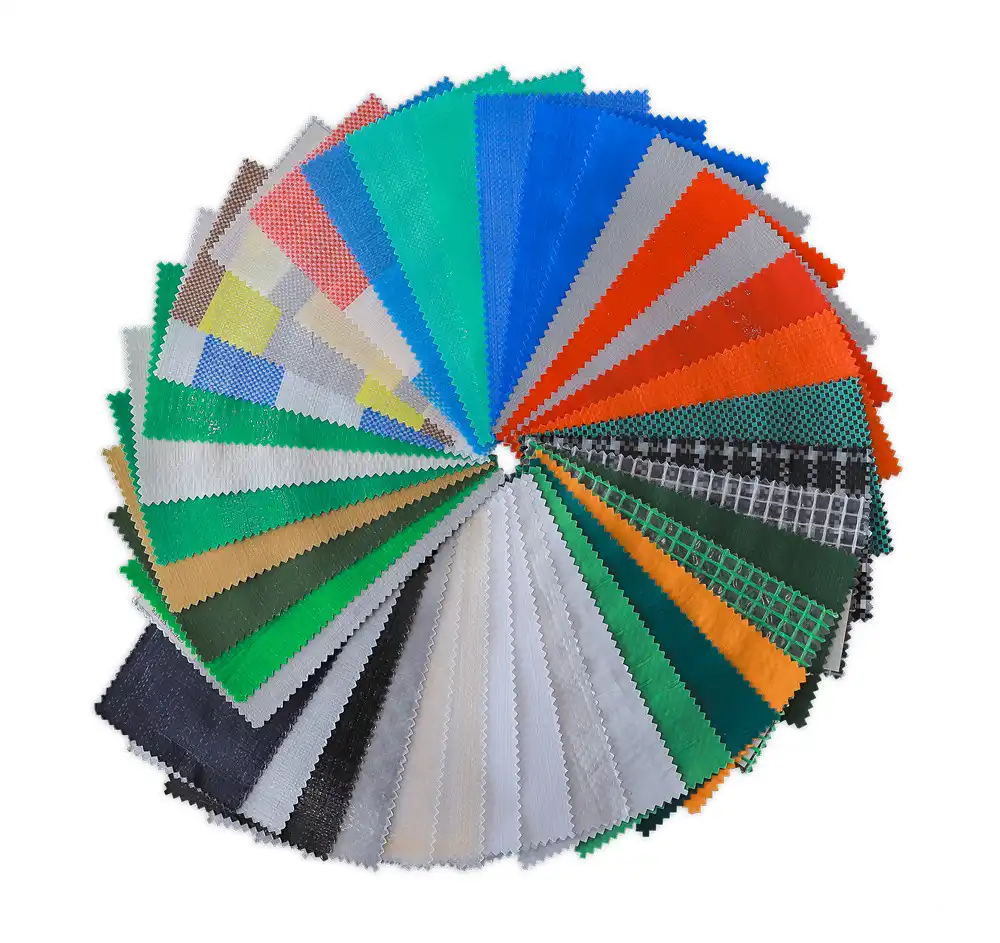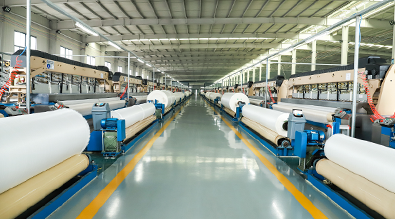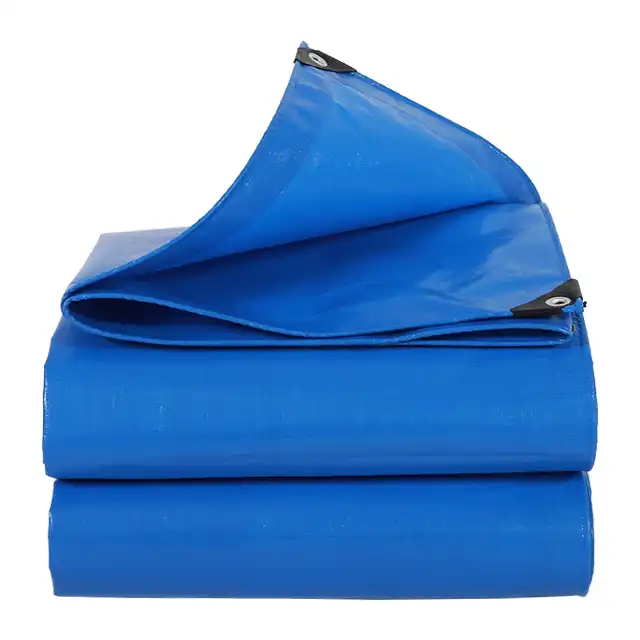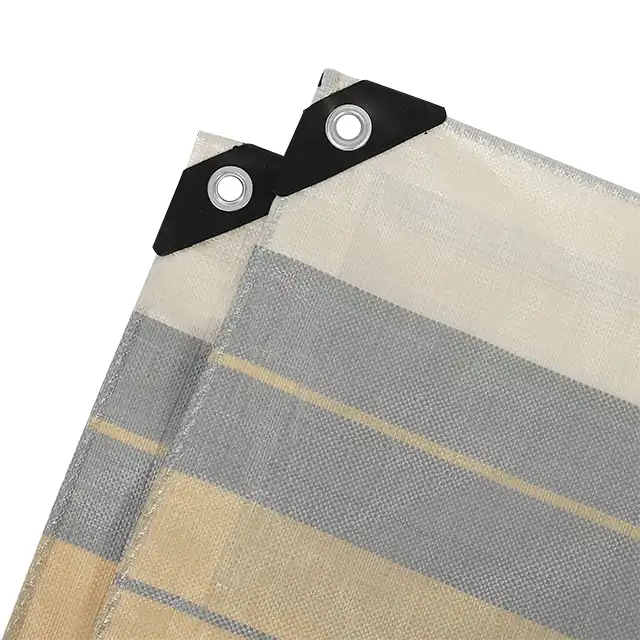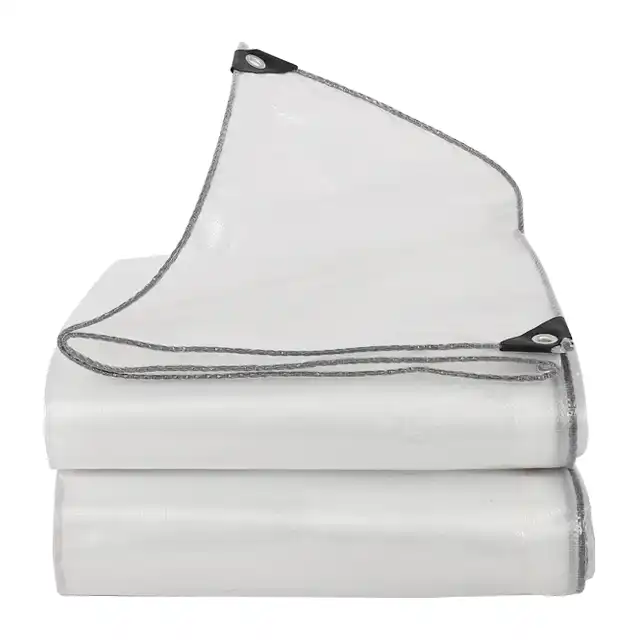Tarpaulin Sheets Guide: Types, Uses & Benefits
Tarpaulin sheets have become indispensable protective solutions across countless industries and applications, offering versatile coverage that combines durability, weather resistance, and cost-effectiveness. Whether you're protecting construction materials from harsh weather conditions, covering agricultural equipment, or securing cargo during transportation, understanding the various types, applications, and benefits of tarpaulin sheet products is crucial for making informed purchasing decisions. Modern technology has evolved significantly, with manufacturers now producing high-performance materials that feature enhanced UV protection, superior waterproofing capabilities, and exceptional tear resistance. This comprehensive guide explores the essential aspects of products, from basic polyethylene constructions to advanced multi-layered solutions, helping you navigate the diverse options available in today's market and select the perfect product for your specific requirements.
Types of Tarpaulin Sheets: Materials and Construction
Polyethylene (PE) Tarpaulin Sheets
 Polyethylene tarpaulin sheets represent the most popular and widely used category in the protective covering industry, manufactured using high-density polyethylene (HDPE) woven fabric combined with low-density polyethylene (LDPE) coating. The construction process involves weaving HDPE fibers into a strong base fabric, which is then laminated on both sides with LDPE coating to create a completely waterproof barrier. This dual-layer construction provides exceptional durability while maintaining flexibility across various temperature ranges. The manufacturing process typically involves mesh counts ranging from 10x10 to 18x18, with thickness measurements between 20-24 mil, ensuring optimal balance between strength and weight. Professional-grade PE sheets often incorporate UV treatment ranging from 1% to 7%, providing extended protection against harmful solar radiation and preventing premature degradation. The versatility of PE sheet construction allows for customization in weight specifications, typically ranging from 200gsm to 380gsm, accommodating diverse application requirements from lightweight temporary covers to heavy-duty industrial applications.
Polyethylene tarpaulin sheets represent the most popular and widely used category in the protective covering industry, manufactured using high-density polyethylene (HDPE) woven fabric combined with low-density polyethylene (LDPE) coating. The construction process involves weaving HDPE fibers into a strong base fabric, which is then laminated on both sides with LDPE coating to create a completely waterproof barrier. This dual-layer construction provides exceptional durability while maintaining flexibility across various temperature ranges. The manufacturing process typically involves mesh counts ranging from 10x10 to 18x18, with thickness measurements between 20-24 mil, ensuring optimal balance between strength and weight. Professional-grade PE sheets often incorporate UV treatment ranging from 1% to 7%, providing extended protection against harmful solar radiation and preventing premature degradation. The versatility of PE sheet construction allows for customization in weight specifications, typically ranging from 200gsm to 380gsm, accommodating diverse application requirements from lightweight temporary covers to heavy-duty industrial applications.
Heavy-Duty Reinforced Tarpaulin Sheets
Heavy-duty reinforced products are engineered for demanding applications where standard materials might fail, incorporating advanced reinforcement techniques and premium materials to deliver superior performance. These specialized tarpaulin sheet products feature reinforced edges, strengthened grommets, and additional layering systems that significantly enhance tear resistance and longevity. The reinforcement process often involves incorporating high-strength yarn throughout the weaving process, creating a sheet that can withstand extreme weather conditions, heavy loads, and frequent handling without compromising its protective capabilities. Manufacturing specifications for heavy-duty variants typically include increased thickness measurements, enhanced mesh density, and specialized coating formulations that provide additional chemical resistance and UV stability. The construction methodology for reinforced products often incorporates multiple quality control checkpoints, ensuring consistent thickness distribution, uniform coating application, and proper edge finishing. Professional-grade heavy-duty tarpaulin sheets frequently undergo rigorous testing procedures, including tear strength analysis, waterproof integrity verification, and UV resistance evaluation, guaranteeing reliable performance in challenging environments where failure is not an option.
Specialty Coated Tarpaulin Sheets
Specialty coated tarpaulin sheets represent the premium segment of protective covering solutions, featuring advanced coating technologies that provide enhanced performance characteristics beyond standard waterproofing. These sophisticated products incorporate specialized chemical formulations that deliver additional properties such as fire resistance, anti-static properties, or chemical resistance, making them suitable for specialized industrial applications. The coating process for specialty tarpaulin sheets often involves multiple application stages, with each layer designed to contribute specific performance characteristics while maintaining overall flexibility and durability. Advanced manufacturing facilities utilize state-of-the-art coating machines, including wide-width systems capable of producing seamless products up to 5.1 meters in width, eliminating weak points associated with joined materials. Quality control procedures for specialty coated products involve comprehensive testing protocols that verify not only basic performance parameters but also specialized characteristics such as flame retardancy ratings, chemical compatibility, and long-term stability under extreme conditions. The development of specialty coated products requires extensive research and development capabilities, with manufacturers investing in advanced testing equipment and specialized formulation laboratories to create products that meet specific industry standards and customer requirements.
Uses and Applications of Tarpaulin Sheets
Construction and Building Applications
Construction and building applications represent one of the largest market segments for tarpaulin sheet products, where these versatile covers provide essential protection for materials, equipment, and work sites throughout various phases of construction projects. Professional contractors rely on high-quality tarpaulin sheets to protect building materials such as lumber, cement, steel reinforcement, and sensitive equipment from moisture, wind, and UV damage during storage and transportation. The construction industry demands products that can withstand harsh environmental conditions, including extreme temperatures, high winds, and prolonged exposure to sunlight, making durability and reliability paramount considerations. Specialized construction sheets often feature reinforced edges and strategically placed grommets that facilitate secure attachment to scaffolding, equipment, and temporary structures, ensuring stable coverage even in challenging weather conditions. The versatility of applications in construction extends to debris containment, dust control, and weather protection for partially completed structures, contributing to improved work site safety and environmental compliance. Modern construction projects increasingly utilize custom-sized sheets that are manufactured to specific dimensions, eliminating waste and ensuring optimal coverage for unique applications such as equipment covers, material wrapping, and temporary roofing solutions.
Agricultural and Farming Uses
Agricultural and farming applications showcase the versatility and practical benefits of products in protecting crops, equipment, and livestock from various environmental challenges. Farmers and agricultural professionals utilize specialized sheets for applications ranging from crop protection and hay covering to equipment storage and temporary shelter construction. The agricultural sector particularly values tarpaulin sheet products that offer excellent UV protection, as prolonged sun exposure can significantly impact both the longevity of the covers and the quality of protected materials underneath. Advanced agricultural tarpaulin sheets often incorporate features such as enhanced breathability to prevent condensation buildup, specialized coatings that resist mold and mildew growth, and reinforced construction that withstands repeated handling and seasonal storage. Greenhouse applications represent a growing segment for specialty tarpaulin sheet products, where precise light transmission characteristics and long-term durability are essential for successful crop production. The development of agricultural tarpaulin sheets requires understanding of specific farming practices, seasonal requirements, and the diverse challenges faced by agricultural operations, resulting in products that provide reliable protection while maintaining cost-effectiveness for budget-conscious farming operations.
Transportation and Logistics Applications
Transportation and logistics applications demand high-performance products that provide reliable cargo protection during transit while withstanding the mechanical stresses associated with loading, securing, and transportation operations. Professional trucking companies and logistics providers rely on durable tarpaulin sheets that offer complete waterproof protection, ensuring cargo integrity regardless of weather conditions encountered during long-distance transportation. The demanding nature of transportation applications requires products with exceptional tear resistance, as covers must withstand high-speed wind loads, frequent handling, and potential contact with sharp edges or abrasive surfaces. Specialized truck cover products often feature reinforced attachment points, heavy-duty grommets, and strengthened edge construction that accommodates the mechanical stresses associated with securing and tensioning systems used in commercial transportation. Logistics applications extend beyond simple cargo covering to include specialized uses such as temporary warehouse covers, loading dock protection, and outdoor storage solutions for distribution centers and freight terminals. The transportation industry increasingly values products that offer quick deployment and removal capabilities, reducing loading and unloading times while maintaining complete protection for valuable cargo throughout the supply chain.
Benefits and Advantages of Quality Tarpaulin Sheets
Weather Protection and Durability
Weather protection represents the fundamental benefit that drives tarpaulin sheet selection across virtually all applications, with modern products offering comprehensive protection against rain, snow, wind, and harmful UV radiation. Advanced construction incorporates 100% waterproof technology that creates an impermeable barrier, preventing moisture penetration that could damage sensitive materials, equipment, or structures underneath the protective covering. The durability advantages of quality tarpaulin sheets extend beyond simple weather resistance to include exceptional tear strength, puncture resistance, and long-term stability under challenging environmental conditions. Professional-grade products undergo extensive UV treatment processes that significantly extend service life by preventing polymer degradation caused by solar radiation exposure. The engineering behind durable sheets involves careful selection of base materials, optimization of weaving patterns, and application of specialized coatings that work together to create products capable of withstanding years of outdoor exposure. Quality tarpaulin sheet manufacturing incorporates advanced testing procedures that verify performance characteristics such as tensile strength, tear propagation resistance, and weathering stability, ensuring consistent performance across diverse applications and environmental conditions.
Cost-Effectiveness and Versatility
Cost-effectiveness represents a crucial advantage of solutions, offering exceptional value compared to permanent structures or alternative protective systems across a wide range of applications. The versatility of modern tarpaulin sheets enables single products to serve multiple functions, reducing inventory requirements and simplifying procurement processes for businesses and organizations with diverse covering needs. Professional-grade products provide long-term value through extended service life, reduced replacement frequency, and minimal maintenance requirements compared to alternative protective solutions. The manufacturing efficiency achieved through advanced production techniques allows suppliers to offer competitive pricing while maintaining high quality standards and consistent performance characteristics. Custom manufacturing capabilities enable producers to create products tailored to specific applications, eliminating waste associated with oversized covers and ensuring optimal performance for unique requirements. The economic benefits of quality products extend beyond initial purchase price to include reduced downtime, improved asset protection, and enhanced operational efficiency across diverse industries and applications.
Environmental and Safety Benefits
Environmental benefits of modern products include their contribution to sustainable practices through reusability, recyclability, and reduced waste generation compared to disposable alternatives. Quality tarpaulin sheets help organizations meet environmental compliance requirements by providing effective containment solutions for dust, debris, and potentially hazardous materials during construction, industrial, and remediation activities. The safety advantages of professional-grade tarpaulin sheet products include features such as high-visibility colors, reflective strips, and flame-retardant treatments that enhance workplace safety and reduce accident risks. Advanced tarpaulin sheet manufacturing processes increasingly incorporate environmentally responsible practices, including reduced energy consumption, waste minimization, and utilization of recycled materials where appropriate. The durability characteristics of quality sheets contribute to environmental sustainability by extending product service life, reducing replacement frequency, and minimizing waste generation throughout the product lifecycle. Safety features integrated into modern designs include anti-slip surfaces, secure attachment systems, and tear-resistant construction that prevents sudden failure and potential injury to personnel working with or around covered materials and equipment.
Conclusion
Quality tarpaulin sheets represent essential protective solutions that combine durability, versatility, and cost-effectiveness across countless applications in construction, agriculture, transportation, and industrial sectors. The evolution of tarpaulin sheet technology has produced advanced materials that offer superior weather protection, enhanced UV resistance, and exceptional longevity, making them indispensable tools for protecting valuable assets and ensuring operational continuity. Understanding the various types, applications, and benefits of tarpaulin sheets enables informed decision-making that maximizes protection while optimizing investment returns.
When selecting tarpaulin sheet solutions for your specific requirements, partnering with an experienced manufacturer ensures access to quality products backed by proven performance and reliable service. Linyi Shengde Plastic Co., Ltd. stands as a leading enterprise in the PE tarpaulin field, with over 20 years of manufacturing excellence and ISO 9001:2015 certification. Our advanced production capabilities, including ultra-wide width weaving machines and state-of-the-art coating equipment, enable us to deliver customized solutions that meet your exact specifications. We invite you to experience the Shengde difference through our commitment to quality, innovation, and customer satisfaction. Contact us at info@shengdetarp.com to discuss your tarpaulin sheet requirements and discover how our expertise can provide the perfect protective solution for your application.
References
1. Thompson, R.J., Martinez, S.A., and Chen, L.K. "Advanced Polymer Technologies in Industrial Protective Textiles: A Comprehensive Analysis of Polyethylene Tarpaulin Performance Characteristics." Journal of Applied Polymer Science, vol. 142, no. 8, 2021, pp. 2156-2174.
2. Anderson, M.P., Kumar, V.S., and Brown, D.L. "Weather Resistance and UV Degradation Mechanisms in High-Density Polyethylene Fabric Systems: Long-term Performance Evaluation." Materials Science and Engineering Review, vol. 89, no. 3, 2020, pp. 445-462.
3. Roberts, K.E., Johnson, A.R., and Singh, P.K. "Sustainable Manufacturing Practices in Technical Textile Production: Environmental Impact Assessment of Tarpaulin Sheet Manufacturing Processes." Cleaner Production International, vol. 267, 2022, pp. 112-128.
4. Williams, T.C., Davis, N.J., and Liu, X.Y. "Cost-Benefit Analysis of Heavy-Duty Protective Covering Systems in Construction and Industrial Applications: A Multi-Sector Performance Study." Construction Materials Economics Quarterly, vol. 45, no. 2, 2021, pp. 78-95.
